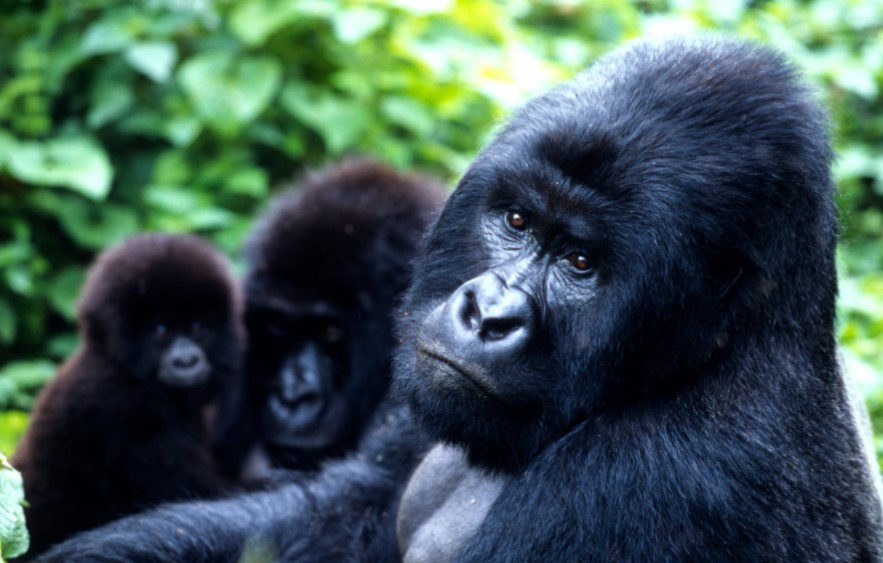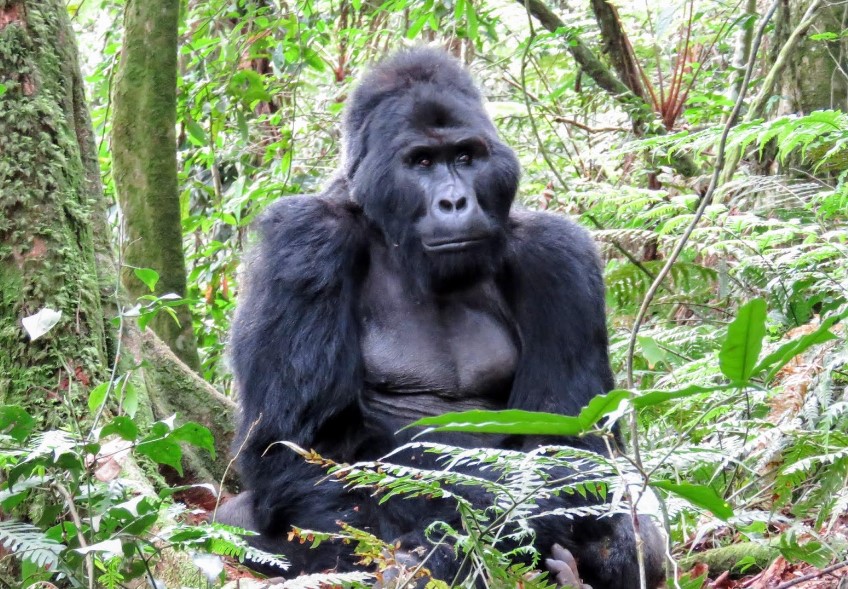The Majestic Life of Mountain Gorillas in Uganda-Nestled within the lush rainforests of Uganda, the majestic mountain gorillas thrive in their natural habitat. As one of the most endangered species on the planet, these gentle giants captivate the hearts of wildlife enthusiasts and conservationists alike.
This article delves into the extraordinary life of mountain gorillas, their unique characteristics, their conservation efforts, and the remarkable experiences offered to those fortunate enough to witness them in the wild.
Physical Characteristics and Habitat of Mountain Gorillas in Uganda
Mountain gorillas (Gorilla beringei beringei) are one of two subspecies of eastern gorillas, and Uganda is home to roughly half of the world’s population. These magnificent creatures possess remarkable physical features, with males weighing up to 440 pounds and standing up to 6 feet tall when fully upright. They exhibit robust builds, strong arms, and a thick fur coat that provides insulation against the cool mountain climate.
Mountain gorillas inhabit the dense rainforests and bamboo forests found in Uganda’s national parks, primarily Bwindi Impenetrable National Park and Mgahinga Gorilla National Park. These protected areas offer the gorillas a sanctuary where they can forage, socialize, and rear their young without disturbance. The unique geography and diverse vegetation in these parks create an ideal habitat for their survival.
Social Structure and Behavior of Mountain Gorillas
Mountain gorillas are highly social animals, living in stable family groups known as troops or bands. Each troop is led by a dominant silverback, an adult male distinguished by his silver back and large size. The silverback is responsible for protecting the group and ensuring their well-being.
The troops consist of several adult females, their offspring, and a few subordinate males. These groups can vary in size, ranging from 5 to 30 individuals. Mountain gorillas exhibit strong family bonds, with females remaining within their natal group and males leaving to establish their own troops.
Their daily lives are characterized by a blend of activities, including foraging for food, resting, and engaging in social interactions. Mountain gorillas are herbivores, consuming a predominantly vegetarian diet consisting of leaves, shoots, stems, bark, and fruits.
Despite their massive size, they are generally peaceful creatures, displaying a calm demeanor unless provoked. Gorillas communicate through a repertoire of vocalizations, body postures, and facial expressions, enabling them to convey their intentions and maintain group cohesion.
Conservation Efforts of Mountain Gorillas in Uganda
Uganda has made commendable efforts to conserve mountain gorillas and their habitat. Government initiatives, in collaboration with international organizations and local communities, have been instrumental in protecting these remarkable creatures. Strict conservation measures have been implemented to minimize human disturbance, including the establishment of national parks, strict permit systems for gorilla trekking, and anti-poaching patrols.
Ecotourism plays a vital role in gorilla conservation, providing sustainable income for local communities while promoting environmental awareness. Gorilla trekking, a popular activity among tourists, allows visitors to track and observe these incredible primates in their natural environment, under the guidance of trained park rangers. This unique experience fosters appreciation for the gorillas and their fragile ecosystem, encouraging a sense of responsibility and support for their conservation.
In conclusion, the life of mountain gorillas in Uganda is a testament to the beauty and resilience of nature. Despite their endangered status, these gentle giants have found a sanctuary in the lush rainforests of Uganda’s national parks. Their physical characteristics, social structure, and unique behaviors make them a captivating species to study and observe.
Through dedicated conservation efforts, Uganda has become a beacon of hope for the survival of mountain gorillas, with strict protection measures and responsible tourism initiatives ensuring their continued existence.
By preserving their natural habitat, promoting awareness, and supporting sustainable practices, we can secure a brighter future for these majestic animals and contribute to the preservation of our planet’s biodiversity. Let us cherish and protect the life of mountain gorillas in Uganda, for they are a priceless treasure that must be safeguarded for generations to come.



Comment (0)